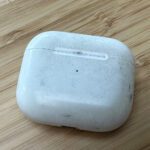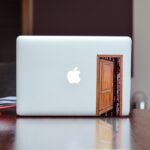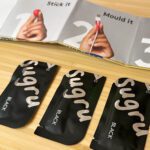Apple boasts that it attaches great importance to user privacy and protection. At the same time, great importance is also attached to digital networking in the family and among friends. However, the individual possibilities through shared content, access rights to folders, devices and accounts as well as similar mechanisms and settings can also have negative effects. Under certain circumstances, criminal subjects, stalkers and the like could take advantage of a network that you do not want. Here's how to find out who has access to your Apple devices and accounts.

Chapter in this post:
Apple checklist for device and account access
In January 2022, Apple published a "Personal Safety User Guide", i.e. a guide for personal safety on Apple devices. At the end of the month it had not yet been translated into German. That's why you'll find the translated checklist here, which so far is only available in English under the title "See who has access to your device or accounts" - I've packed a few additional tips for you:
- You can use the mobile Apple device at Settings → Own name Look at the bottom to see if there's a device you don't recognize. Known devices can be your Mac computer, your iPhone and iPad, your Fire TV Stick, your Windows PC, etc. If a device seems suspicious, just tap on it and select "Remove from account".
- You can find out if there are additional entries for Face ID or Touch ID (which others can use to unlock the iPhone, iPod Touch or iPad). Settings → Face ID and passcode or by Settings → Touch ID and passcode out. Here you can also reset the face scan or fingerprint for identification.
- On the Apple ID website (https://appleid.apple.com) you can see your personal data and stored information. This is a quick and easy way to check whether someone has entered additional information or permissions. Under "Devices" you can view the linked devices (as in point 1 of this list) and remove them if necessary.
- Two-factor authentication is a good thing. But here, too, you should check whether someone has smuggled in their own device for the check. On the mobile device you can More colorful Settings → Own name → Password & security Check if you have two-factor authentication enabled.
- You can also check if you can find apps on your Mac, iPhone, iPad or other Apple device that you did not install yourself. On the Mac that goes over hard disk → Program, and on mobile via the App Library (swipe left on all Home screens on iPhone). You can find out the purpose of the unknown apps in the App Store or using a search engine.
- Supervisors, schools or other authorities can use the so-called "Mobile Device Management" (MDM) to access issued devices and carry out certain actions. No MDM should be set up on the private device. Whether that's the case, you can see below Settings → General → VPN and device management.
- In the Finder, in the Photos app, in cloud applications and in other apps, you can see who you are sharing which folders or files with. If someone has access, then that person can access specific content or even the entire device. Here, too, Apple offers various guides and instructions.
Related Articles
After graduating from high school, Johannes completed an apprenticeship as a business assistant specializing in foreign languages. But then he decided to research and write, which resulted in his independence. For several years he has been working for Sir Apfelot, among others. His articles include product introductions, news, manuals, video games, consoles, and more. He follows Apple keynotes live via stream.










Hi John,
My original AppleID A0 was deactivated by entering my password incorrectly several times. The reactivation failed because of the non-remembering of required phone numbers, which I could not remember entering when creating the account. I then created two new accounts (one for ITunes (AppleID: A1), one for my IPhone XS (AppleID: A2). With the help of an employee from the local Apple store, I was able to set up my IPhone XS (AppleID: A2) again I set up my IPhone 14 Pro with this AppleID A2. Today I received an email with the following wording:
******************
Your Apple ID information has been updated
Hello Horst Hader,
for your Apple ID (A0) on October 24, 2022 the following information was updated:
Added trusted phone number - phone number ending in 81
Your trusted devices are used to verify your identity when you make changes to your account, sign in to iCloud, or make iTunes or App Store purchases on a new device.
If you delete a trusted device or the device can no longer be trusted for any reason, it will be removed from your account for your security. After signing in, you can reconfirm your device or add a new device on the Apple ID page in the "Security" section.
With kind regards,
Apple Support
******************
In this request I replaced the AppleIDs with A..!
What does this mean exactly and what should I do?
Greetings to you and the team
Eyrie
Hello Horst,
I have to admit that I have no idea what to do there. I don't really know much about (that tricky) Apple ID stuff and I'm just glad it all sort of works for me. Maybe you can contact Apple Support again, possibly on site in an Apple Store.
Best regards
John
Hi
As soon as you do security-relevant things (e.g. change your password, buy apps for a fee) you will receive a message on the given phone number. for confirmation …
Even when logging into your ID from another device, the phone should complain and suggest a release... nothing more
Thank you!